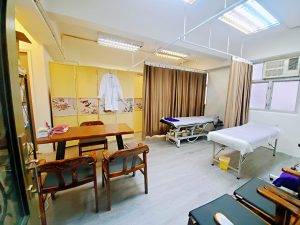Nao Chai, or ankle sprain, is one of the most common musculoskeletal injuries for people of all ages, including athletes and white-collar workers. It is most common in women wearing inappropriate high heels.
Master Bone Clinic pioneered the [Traffic Light Discrimination Method for Sprained Joints] (click here) to provide “foot ABC” training exercises to help recover the severity of sprained joints. Many people do not know when they can start rehabilitation activities, thinking that they have fully recovered before they find that the joints are already stiff. Changing the posture to accommodate the stiffness will affect the strength of the joints in the long run and have far-reaching side effects. If the joint is not secured, a severely injured ankle may not heal well, and may lose its range of motion and stability, resulting in repeated sprains (secondary sprains) and more pain in the long term.
Injury occurs when one or more ligaments in the ankle stretch or tear, causing pain, swelling, and difficulty walking. Many people try to forcibly get rid of an ankle injury, thinking that they will be fine when the swelling subsides. They have not dealt with it properly and do not seek medical attention. If a sprained ankle causes more than just mild pain and swelling, it is important to seek physical therapy.
Article Directory
Types of ankle sprains (reverse injury, lateral sprain, coordinated sprain)
The most common type of ankle sprain is a reverse injury or a lateral ankle sprain. The foot rolls inward and damages the ligaments of the outer ankle-the anterior sliding body ligament, the calcareous ligament and the posterior sliding body ligament. Ligaments are bands of fibrous tissue that connect bones to bones.
Less common is that sprains are ligaments that affect the inner ankle (middle ankle sprain) and synchronized sprains, which damage the main bone ligament-the ligament that connects the two leg bones (main bone and fibula), just above the ankle. The most common cooperative sprain, which occurs during contact sports, is particularly likely to cause chronic ankle instability and subsequent sprains.
Distinguishing between traffic lights for sprained joints
Master Bone Clinic summarized the severity of ankle sprains and the recovery period is as follows:
What kind of medical treatment for sprains and bruises?
The first goal is to reduce pain and swelling and protect the ligaments from further damage. This usually means the use of the very common sports injury RICE program is rest, ice, compression, and elevation. Regardless of whether it is a traditional Chinese medicine, orthopedic or western medicine, it is recommended to rest, because the whole part will have redness, swelling, heat and pain. If a physical therapist can intervene, appropriate cold water foot baths or ice compresses, three to five times a day and Regular follow-up, additional physical therapy for medical treatment, will speed up the progress of the swelling subsidence. Outside the physiotherapy time, it is necessary to use specific Chinese medicine and coating to ensure the position and herbal contact.
How to restore flexible joints
To fully recover from an ankle sprain, you need to restore the normal range of motion of the ankle joint and strengthen its ligaments and supporting muscles. Studies have shown that with the help of elastic materials, starting to move the joints under protection can restore the original flexibility more quickly. Many people don’t know when to start rehabilitation activities, thinking that they have fully recovered before they find that the joints are already stiff. Changing the posture to accommodate the stiffness will affect the strength of the joints in the long run, which has a profound impact.
You can start exercising on the advice of a physical therapist, sitting on a chair or on the floor. As the sprained ankle improves, you can perform standing exercises and watch closely that the symptoms do not get better within two to four weeks.
Actions to help repair functions and prevent secondary sprain injuries
Range of motion, stretching and enhancement exercises (updated)
Stretching and strengthening exercises (updated)
Contact us traumatic pain expert: Master Bone Clinic Physiotherapy Center
Whatsapp : +852 6181 2812




